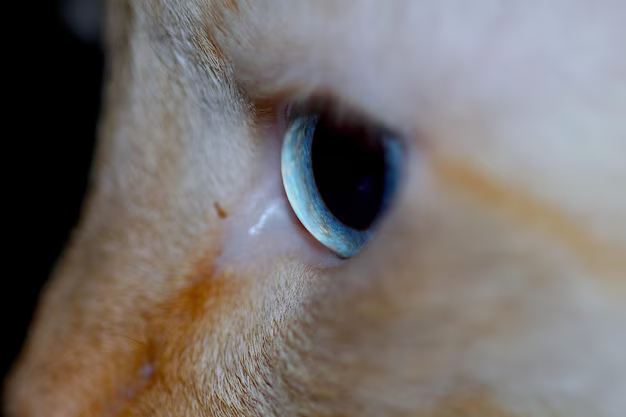Can Your Dog Get Cataracts? Understanding Canine Eye Health
Dogs, our loyal companions with their soulful eyes, often rely on their keen sense of sight to navigate the world. Just like humans, dogs can encounter vision issues. One common concern is cataracts. If you're a pet owner, understanding cataracts in dogs can help you ensure your furry friend’s well-being. In this article, we'll explore what cataracts are, how they affect dogs, what symptoms to watch for, and the potential paths for management.
🐶 What Are Cataracts?
Cataracts are cloudy areas in the lens of the eye that can hinder normal vision. In dogs, as in people, they can be a normal part of aging; however, cataracts can also develop due to a variety of factors, including genetics and health conditions.
The Science Behind Cataracts
A cataract forms when proteins in the eye's lens clump together, forming opaque spots. This process can block light from reaching the retina correctly, leading to diminished vision or even blindness. While cataracts cannot resolve on their own, understanding their onset can aid in better management.
Causes of Cataracts in Dogs
Dogs can develop cataracts due to several reasons, with each scenario requiring different considerations and approaches:
🌿 Genetic Predisposition
Some dog breeds have a genetic tendency towards developing cataracts. Breeds like Cocker Spaniels, Poodles, and Siberian Huskies are more frequently affected. If you have a breed susceptible to cataracts, regular veterinary eye check-ups can be beneficial.
🏥 Health Conditions
Certain health issues, particularly diabetes, can increase the risk of cataract formation in dogs. When a dog has diabetes, elevated blood sugar levels can trigger the processes that lead to cataracts. Other health concerns such as trauma and inflammation can also contribute.
🌟 Age-Related Changes
As dogs age, the potential for cataract development increases. Senile cataracts are fairly common in older dogs and generally signify aging changes in the lens.
Recognizing the Symptoms
Spotting cataracts early can help mitigate further complications. Here are some signs that might indicate your dog is developing cataracts:
- Cloudy or Milky Appearance: The most noticeable sign is a cloudy look in one or both eyes.
- Changes in Vision: If your dog is bumping into things or hesitant with unfamiliar surroundings, it might be struggling with vision.
- Behavioral Changes: Increased anxiety or clumsiness can be signs of vision impairment.
- Eye Irritation: Redness, squinting, or tearing may indicate complications.
Diagnosing Cataracts in Dogs
If you suspect cataracts, a veterinary professional can provide a comprehensive eye assessment.
🩺 Veterinary Examination
A vet will conduct an eye exam to assess the cataract's size and location. This usually involves a flashlight examination and potentially further tests to evaluate eye health and function.
🧪 Additional Testing
In some cases, additional diagnostics like an ultrasound may be recommended to provide insights, especially if surgery is being considered as a treatment method.
Management and Treatment Options
While cataracts cannot be reversed without medical intervention, there are options for managing and treating them:
🍏 Non-surgical Approaches
For minor cataracts, your vet may recommend monitoring them closely and potentially using nutritional supplements designed to support eye health.
🔬 Surgical Intervention
The most effective treatment for cataracts is surgery, where the cloudy lens is removed. This procedure, often called phacoemulsification, is similar to cataract surgery in humans. If applicable, an artificial lens may be placed to enhance vision post-surgery.
Post-operative Care
Caring for a dog post-surgery is crucial. This will likely include prescribed medications and follow-up appointments to ensure proper recovery.
Preventive Measures
While not all cases can be prevented, certain strategies can help manage the risk:
- Regular Eye Check-ups: More frequent veterinary visits can help spot issues early, especially for breeds with higher genetic risks.
- Nutritional Support: A balanced diet enriched with antioxidants might support overall eye health.
- Diabetes Management: Keeping a diabetic dog’s blood sugar well-controlled can reduce the risk of cataracts.
📝 Summary: Key Takeaways for Dog Owners
Here’s a quick guide to keep your dog’s eyes healthy:
- 🐕 Regular Vet Visits: Keep up with regular veterinary exams, especially if your breed is prone to cataracts.
- 👁️ Watch for Symptoms: Look out for cloudy eyes and changes in your dog’s surroundings behavior.
- 🌿 Consider Their Diet: A nutritious diet helps maintain general health.
- 🏥 Explore Treatment Options: If your dog is diagnosed, discuss potential treatments with your vet.
Having this knowledge can prepare you to handle canine cataracts effectively. A proactive approach enriches your dog’s quality of life, allowing for plenty more joyful moments together. Understanding these aspects can also help you avoid unwarranted stress, ensuring happier, more robust days for your furry friend.
Pets are an integral part of our lives, and taking steps to secure their health ensures they remain vibrant companions for years to come. With the right care practices, renowned veterinary insight, and some good fortune, your dog can thrive despite what cataracts might bring.
